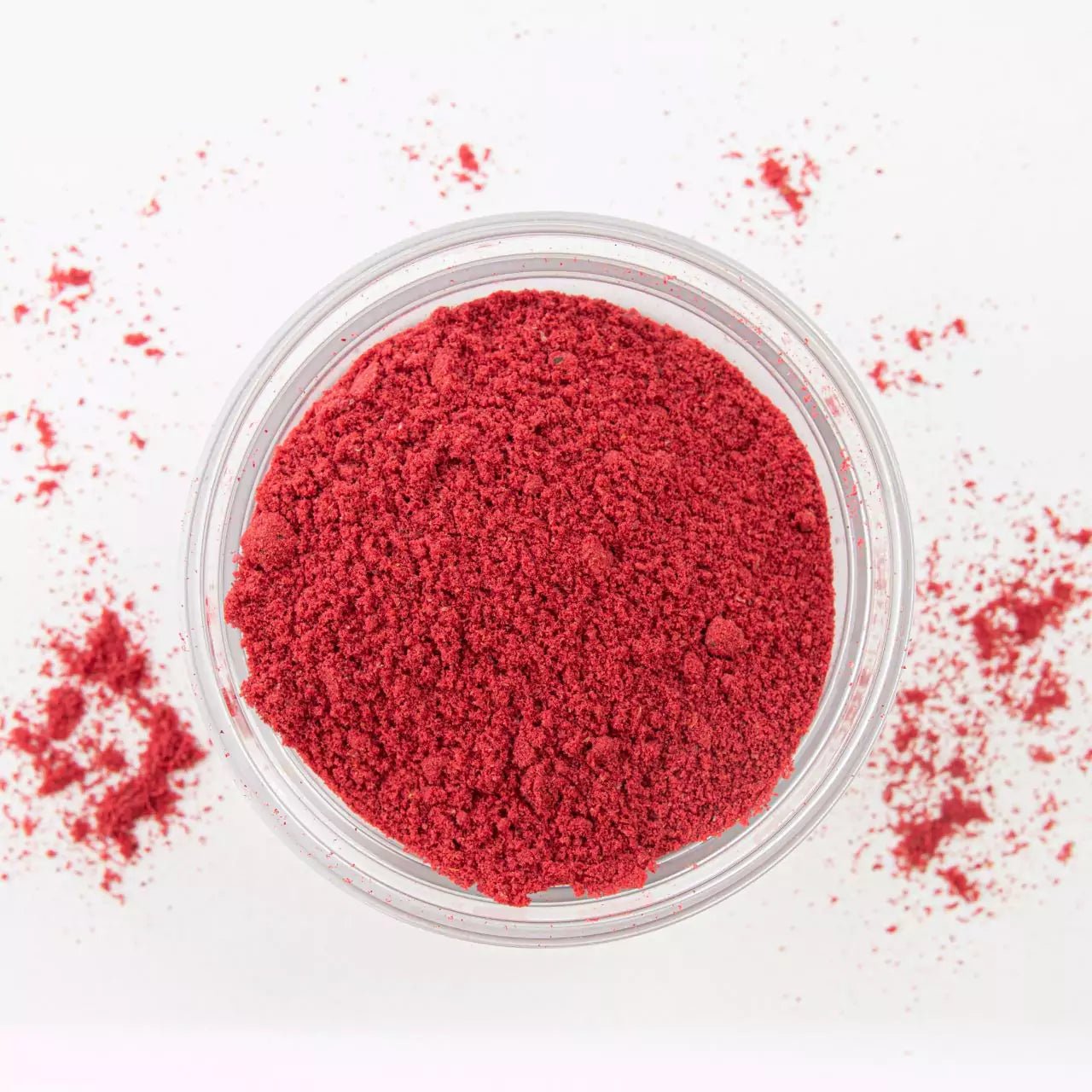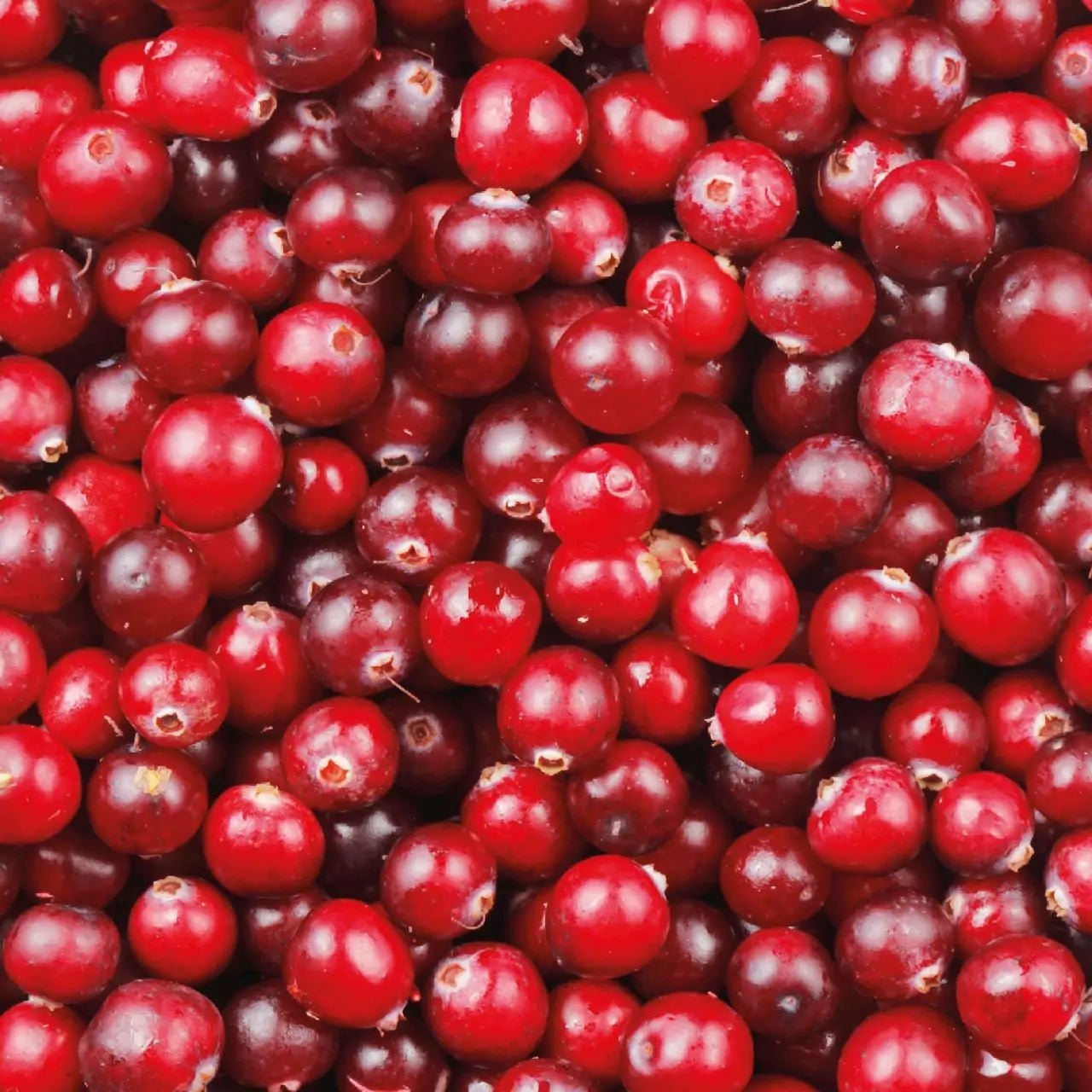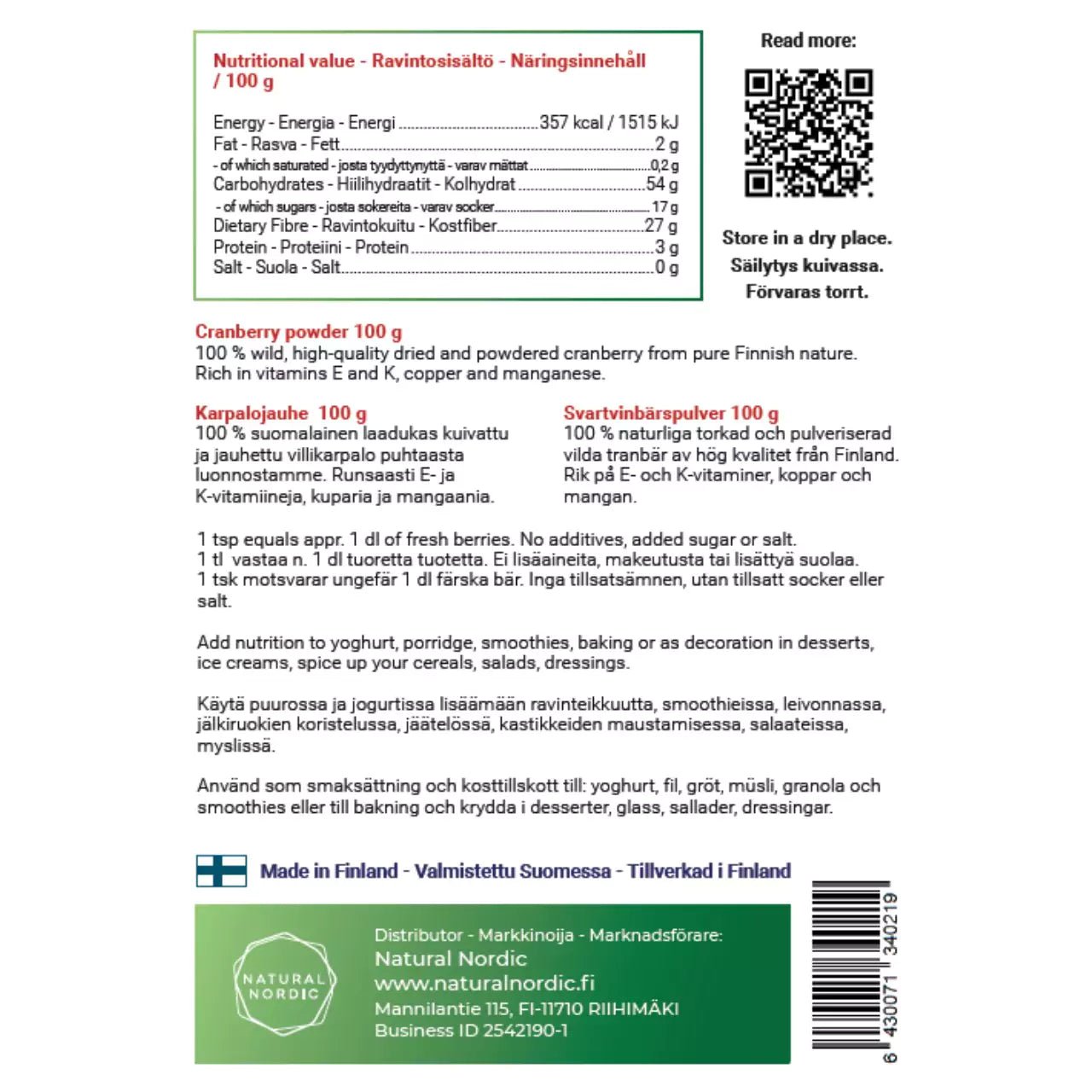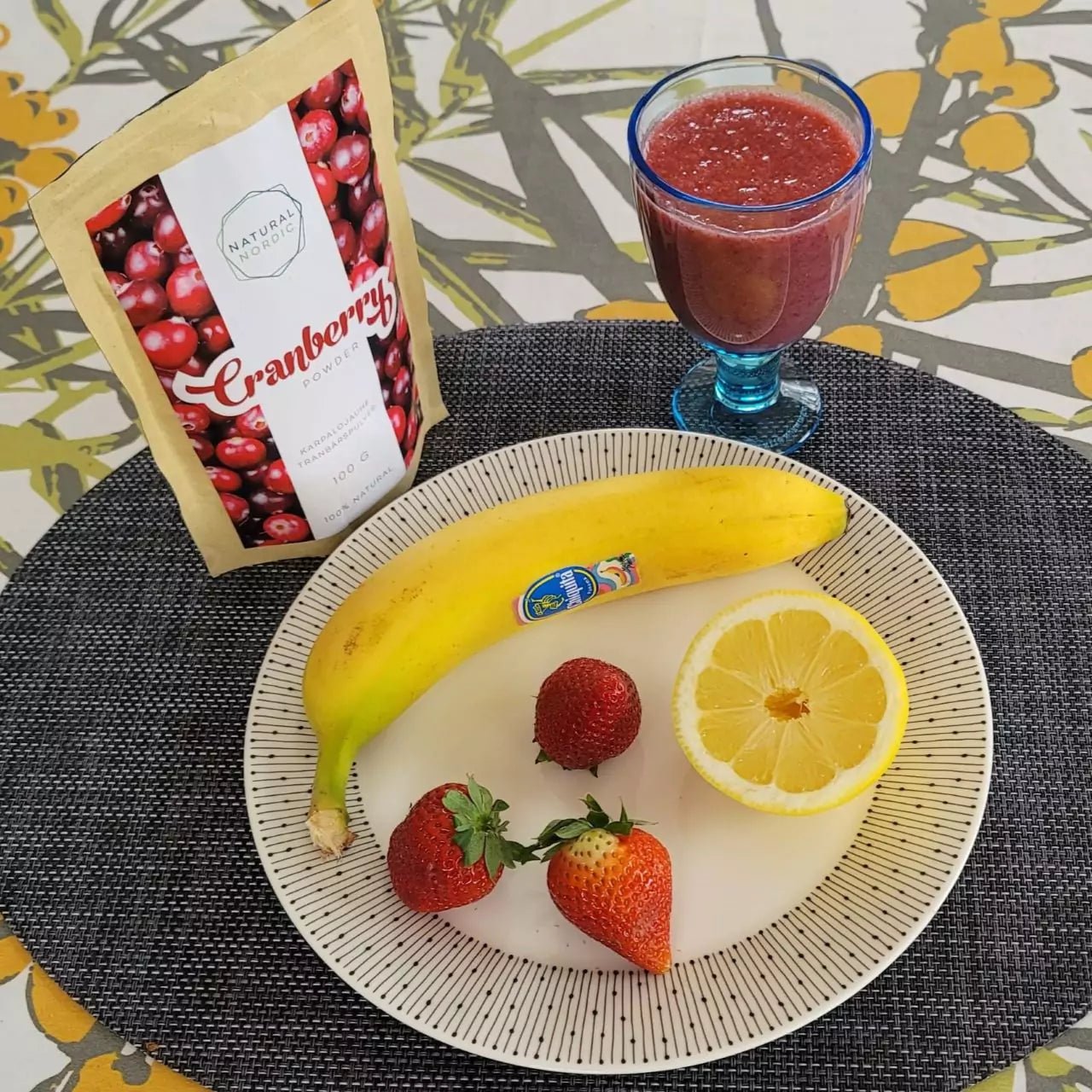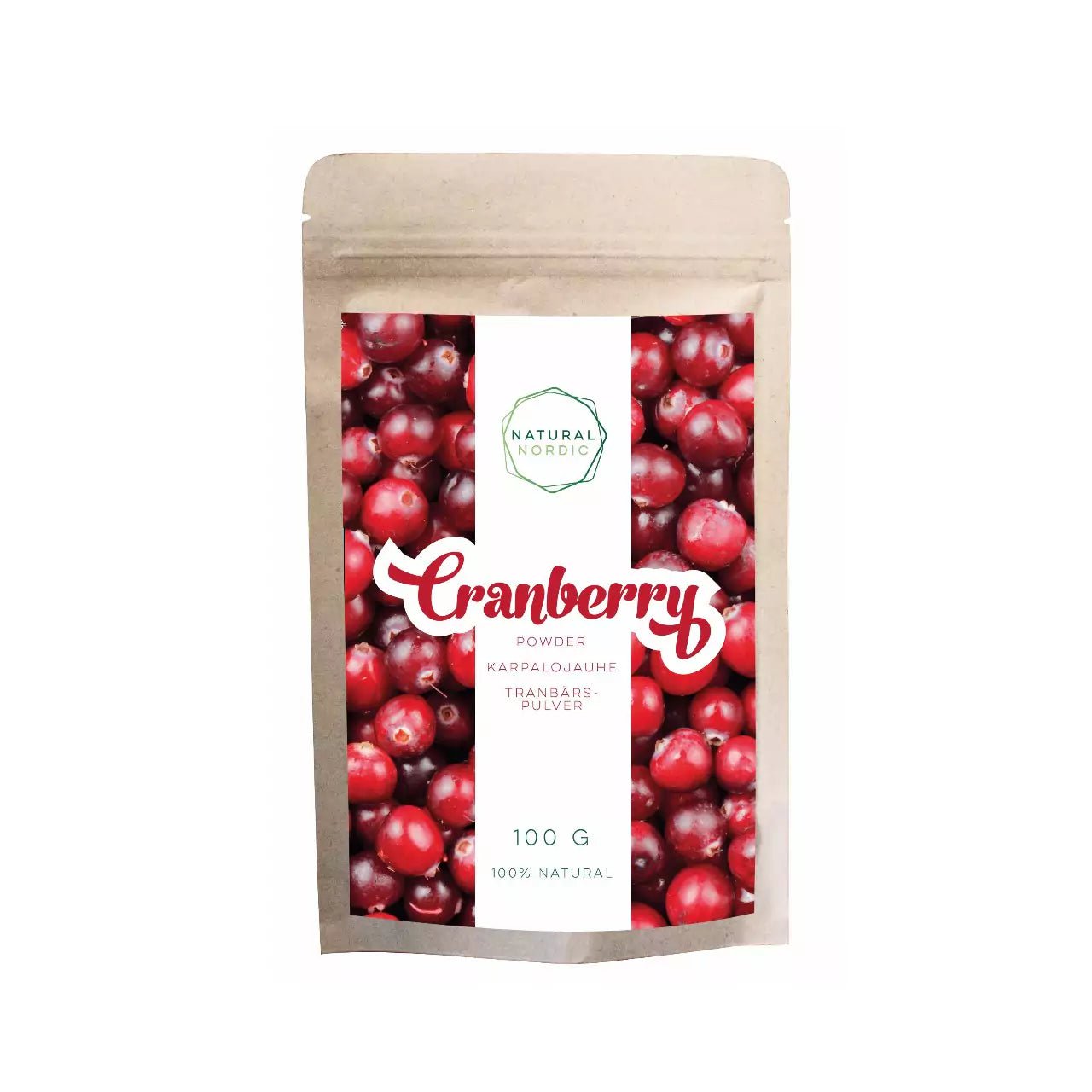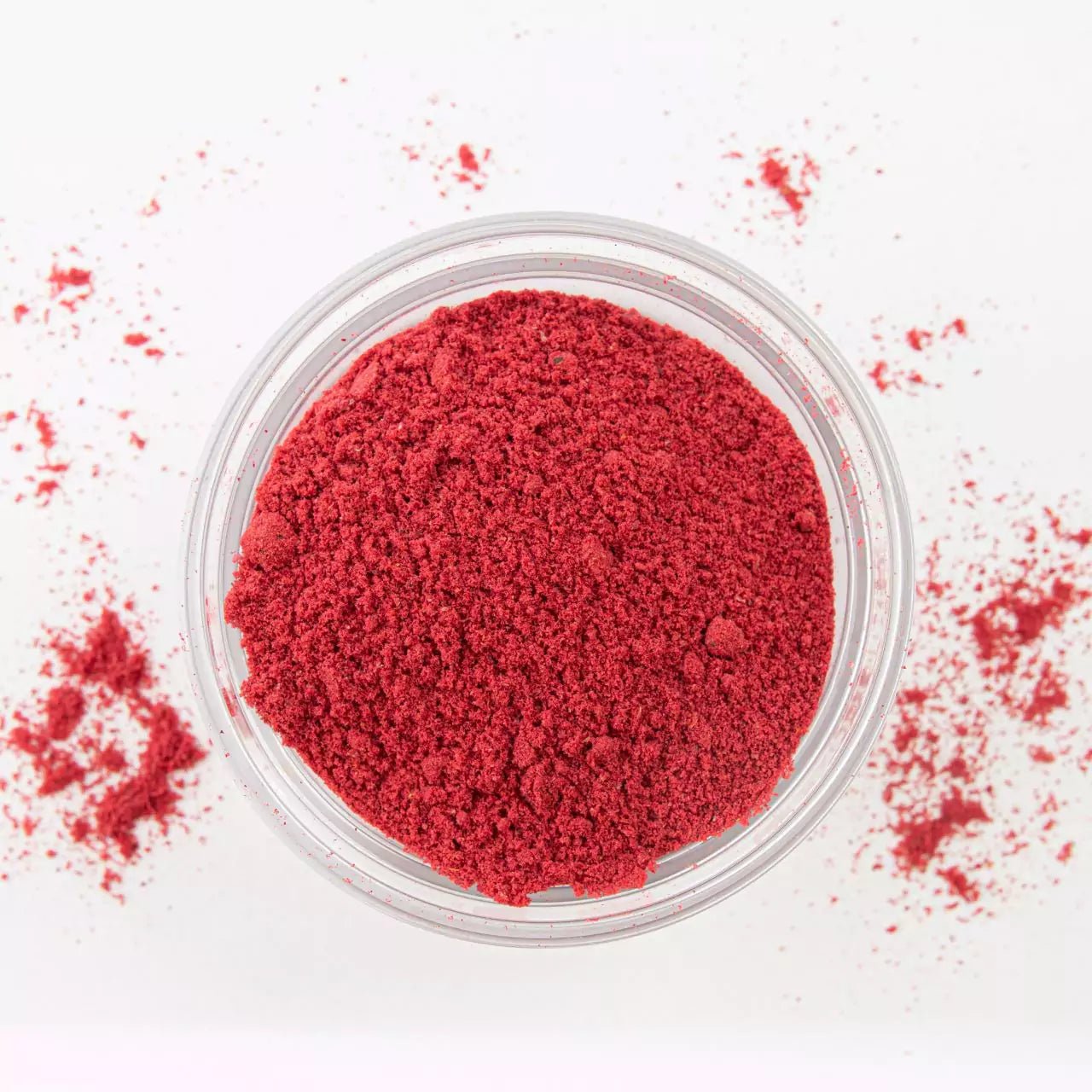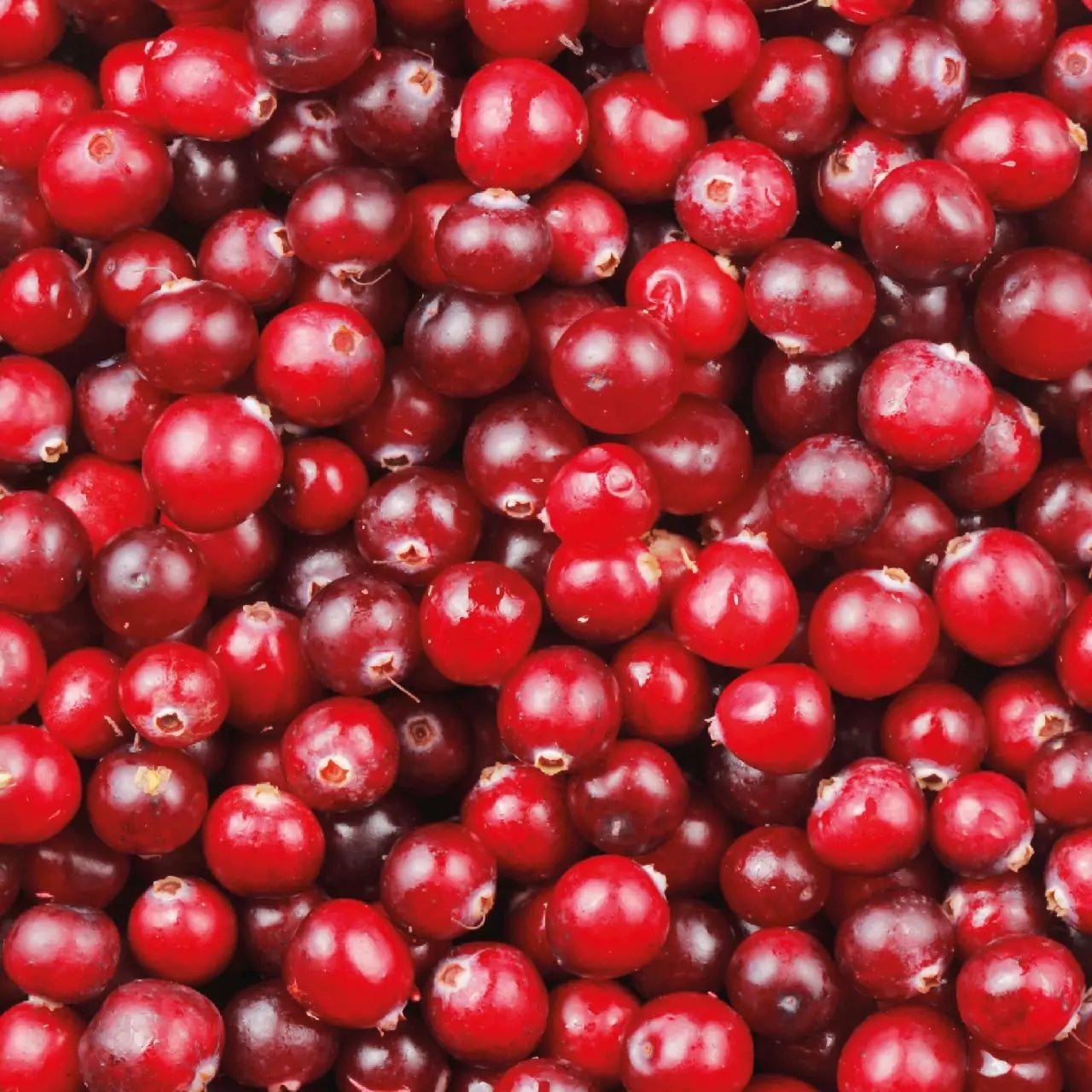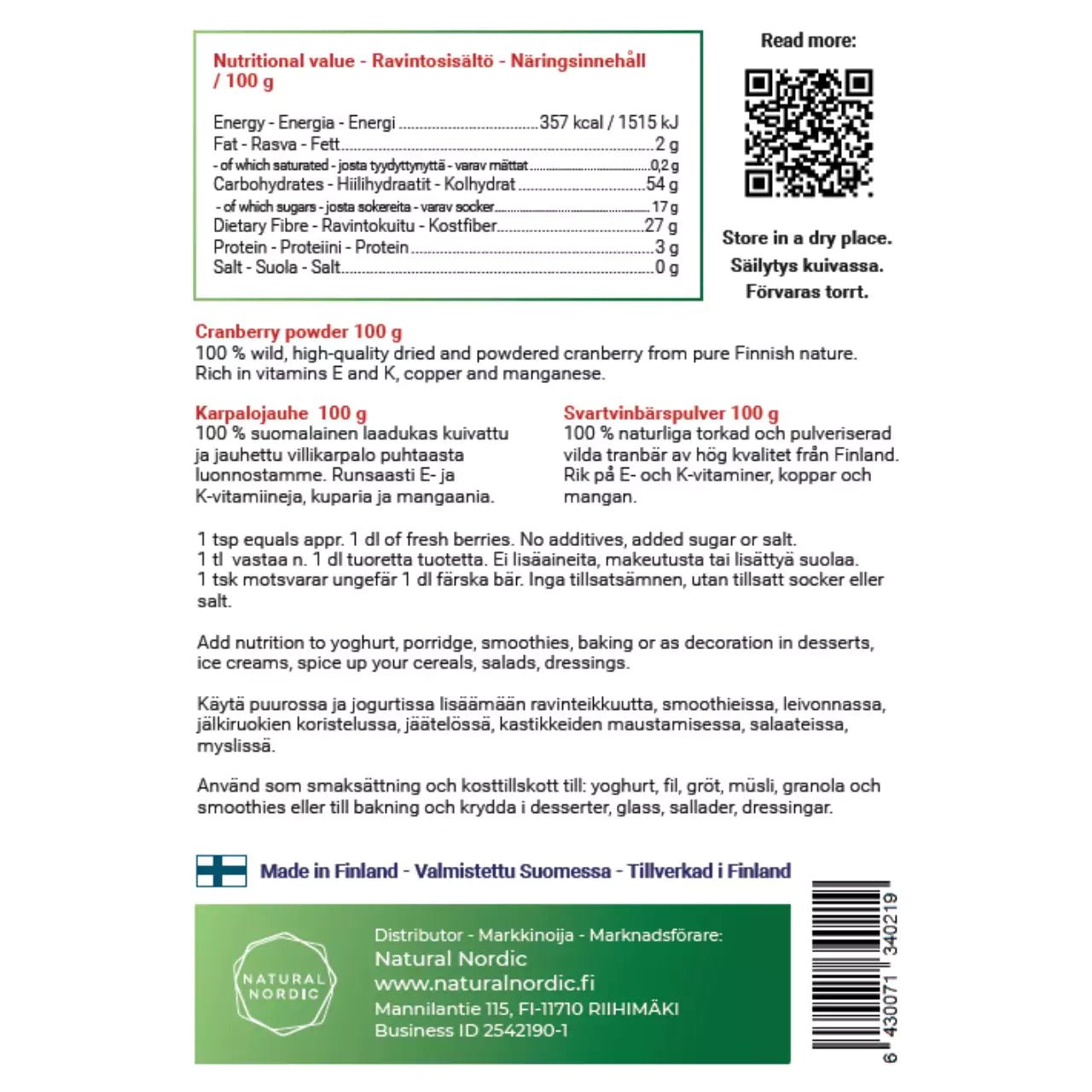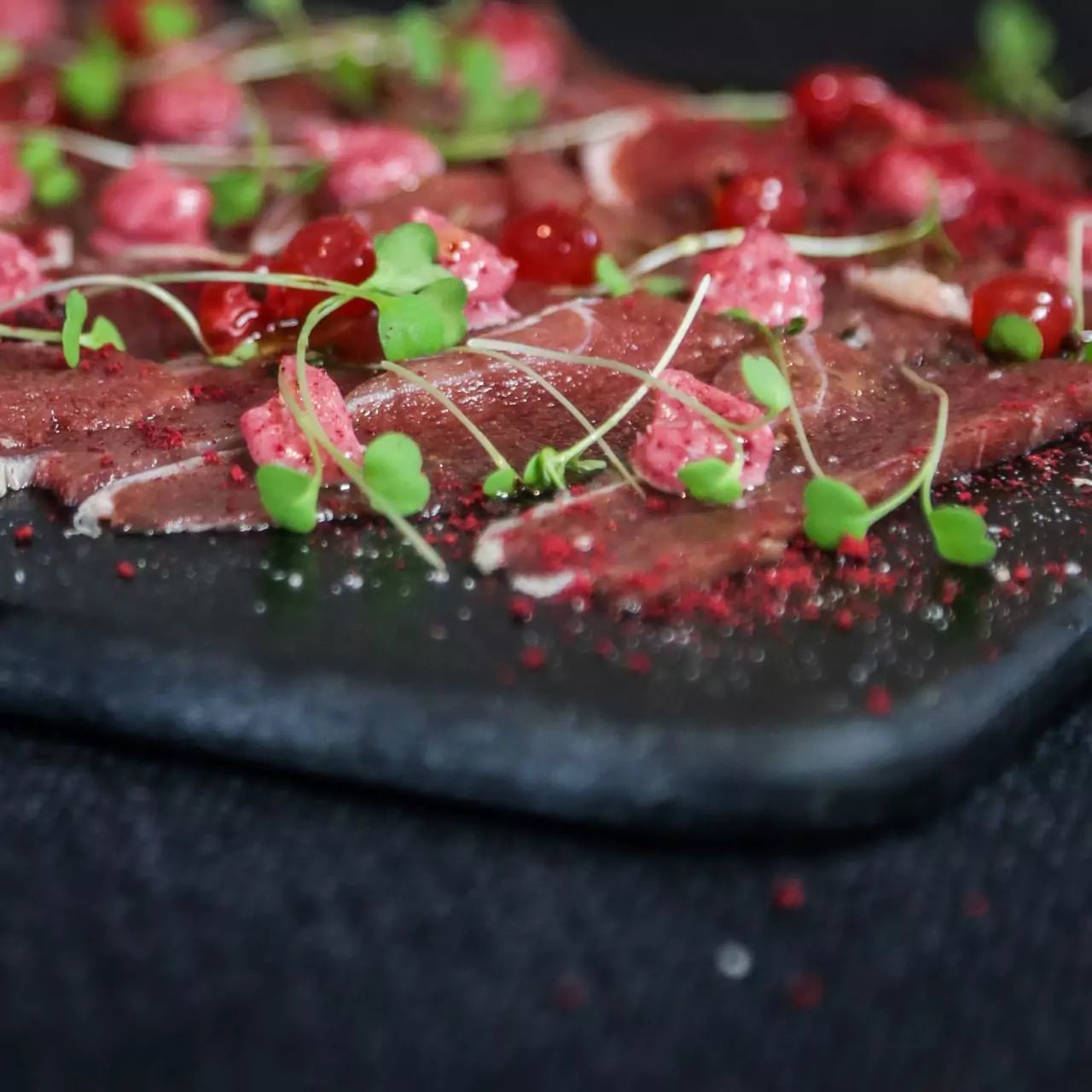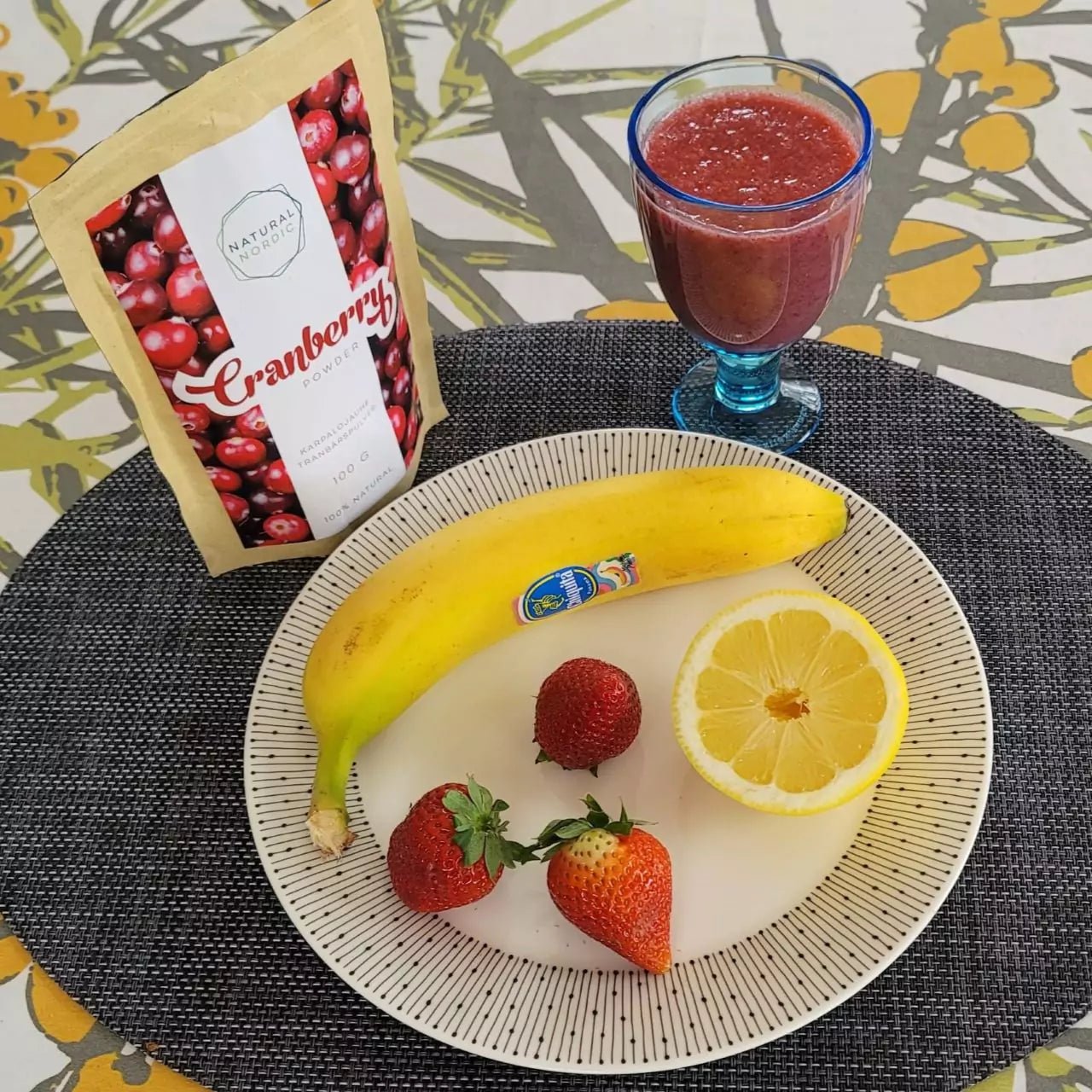CRANBERRY POWDER
CRANBERRY POWDER
Couldn't load pickup availability
Secure checkout with

Cranberry (Vaccinium oxycoccos)
The red queen of the land of lakes and swamps feels right at home in wet pine bogs. The ruby-like berries are handpicked one by one starting from September until the first snow and still in spring, under the snow. The taste of cranberry is an interesting combination of sweet and sour.
Add nutrition to yogurt, oatmeal, smoothies, baking or as decoration in desserts, ice creams, spice up your cereals, salads, dressings with our powerful berry powders.
Cranberry is one of the most well-known and studied wild berries. In addition to being rich in vitamin E, it is a good source of potassium and dietary fiber. It also contains various natural acids: malic, citric and benzoic acid. Benzoic acid preserves the berry naturally. Polyphenol compounds typical to cranberry are flavonols such as quercetin and myricetin, as well as lignans and proanthocyanidins.
RECIPES
Embark on a culinary adventure with Natural Nordic. Discover enticing recipes using our berry powders, inviting you to elevate your well-being through healthy and delicious creations. To check recipes using cranberry powder, click here.
|
Nutritional values |
per 100g |
RI % * |
| Energy | 300 kcal/ 1256 kJ | |
| Fat | 2,0g | |
| - of which saturated | 0.2g | |
| Carbohydrates | 54g | |
| - of which sugars | 17g | |
| Dietary fiber | 27g | |
| Protein | 3g | |
| Salt | 0g | |
| Vitamin C | 32mg | 4% |
| Vitamin E | 7.7mg | 6% |
| Copper | 0.38mg | 4% |
| Manganese | 15mg | 75% |
*) RI % = Daily Reference Intake (adult) per 10g portion %
Source: Fineli, the National Food Composition Database in Finland and producers.

